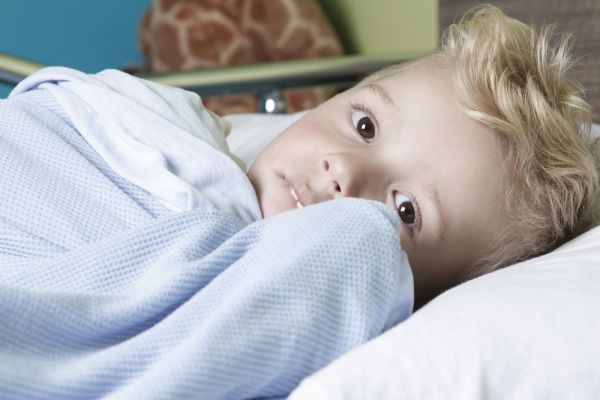The types of cancers that develop in children are different from those that develop in adults. Lifestyle or environmental risk factors don’t play a role. Instead, it’s usually the result of DNA changes in cells that take place very early in life.
Because of major treatment advances, more than 80% of children with cancer now survive five years or more. Still, cancer is the second leading cause of death in children younger than 15 years old, after accidents.
Cancers in children are sometimes hard to recognize because common illnesses or everyday bumps and bruises can mask the early warning signs. Take a closer look at the top five cancers found in children and the warning signs for each.
Acute lymphoblastic leukemia (ALL)
The most common childhood cancer, acute lymphoblastic leukemia accounts for about 34% of all cancers in children. ALL typically occurs between the ages of 2 and 4, and is more common in males than females. Leukemia begins in bone marrow and spreads to the blood, and can then spread to the organs. Three out of four childhood leukemia cases are ALL. Symptoms include:
- Bone and joint pain
- Fatigue
- Weakness
- Bleeding
- Fever
- Weight loss
Brain tumors
Brain tumors and other nervous system tumors make up about 27% of childhood cancers. There are many types of brain tumors and the treatment and outlook for each is different. Most brain tumors in children start in the lower parts of the brain, such as the cerebellum or brain stem. Although brain tumors are typically different in children as opposed to adults, many of the symptoms remain the same. Symptoms include:
- Headaches
- Dizziness
- Balance problems
- Vision, hearing or speech problems
- Frequent vomiting
Getting a second opinion for your child's diagnosis
A second opinion can be helpful and reassuring, and it’s the best way to ensure that your child’s diagnosis is accurate and that the recommended treatment plan is right for you — by experts in the field of pediatric oncology.
Neuroblastoma
Neuroblastoma arises from immature nerve cells in infants and young children. Primarily found in children younger than 5, this disease often begins in the adrenal glands and makes up 7% of childhood cancers in the U.S. It’s more common in males than females, and only 1-2% of children with this disease have a family history of it. Symptoms include:
- Impaired ability to walk
- Changes in eyes (bulging, dark circles, droopy eyelids)
- Pain in various locations of the body
- Diarrhea
- High blood pressure
Wilms tumor
Wilms Tumor starts in the kidneys and is the most common type of pediatric kidney cancer. Wilms tumors usually only form in one kidney, but sometimes both — only in small cases — and accounts for about 5% of all pediatric cancers. This disease is typically found in very young children — 3 to 4 years old — and is not common in children over 6. There are approximately 500 new cases a year in the U.S. and about 9 out of 10 children are cured. Symptoms include:
- Swelling or lump in the belly
- Fever
- Pain
- Nausea
- Poor appetite
Lymphoma
Lymphoma starts in certain cells of the immune system called lymphocytes. These cancers affect lymph nodes and other lymph tissues, like the tonsils or thymus. They can also affect the bone marrow and other organs, and can cause different symptoms depending on where the cancer is growing. Symptoms include:
- Swollen lymph nodes in the neck, armpit, or groin
- Weight loss
- Fever
- Sweats
- Weakness
There are two main types of lymphoma:
Hodgkin lymphoma, sometimes called Hodgkin disease, is rare in children younger than 5 years of age. This type of cancer is very similar in children and adults, including which types of treatment work best.
Non-Hodgkin lymphoma is more likely to occur in younger children than Hodgkin lymphoma, but it is still rare in children younger than 3. The most common types of non-Hodgkin lymphoma in children are different from those in adults. These cancers often grow quickly and require intensive treatment, but they also tend to respond better to treatment than most non-Hodgkin lymphomas in adults.
Since this blog was first posted, we have received an overwhelming response from concerned parents and family members. If you think your child might be experiencing some potential warning signs of cancer we encourage you to make an appointment with the child’s pediatrician as a first step. If your child has already received a diagnosis of cancer, or you think you might need a second opinion, we encourage you to request an appointment with our qualified pediatric cancer team in Buffalo, New York.


